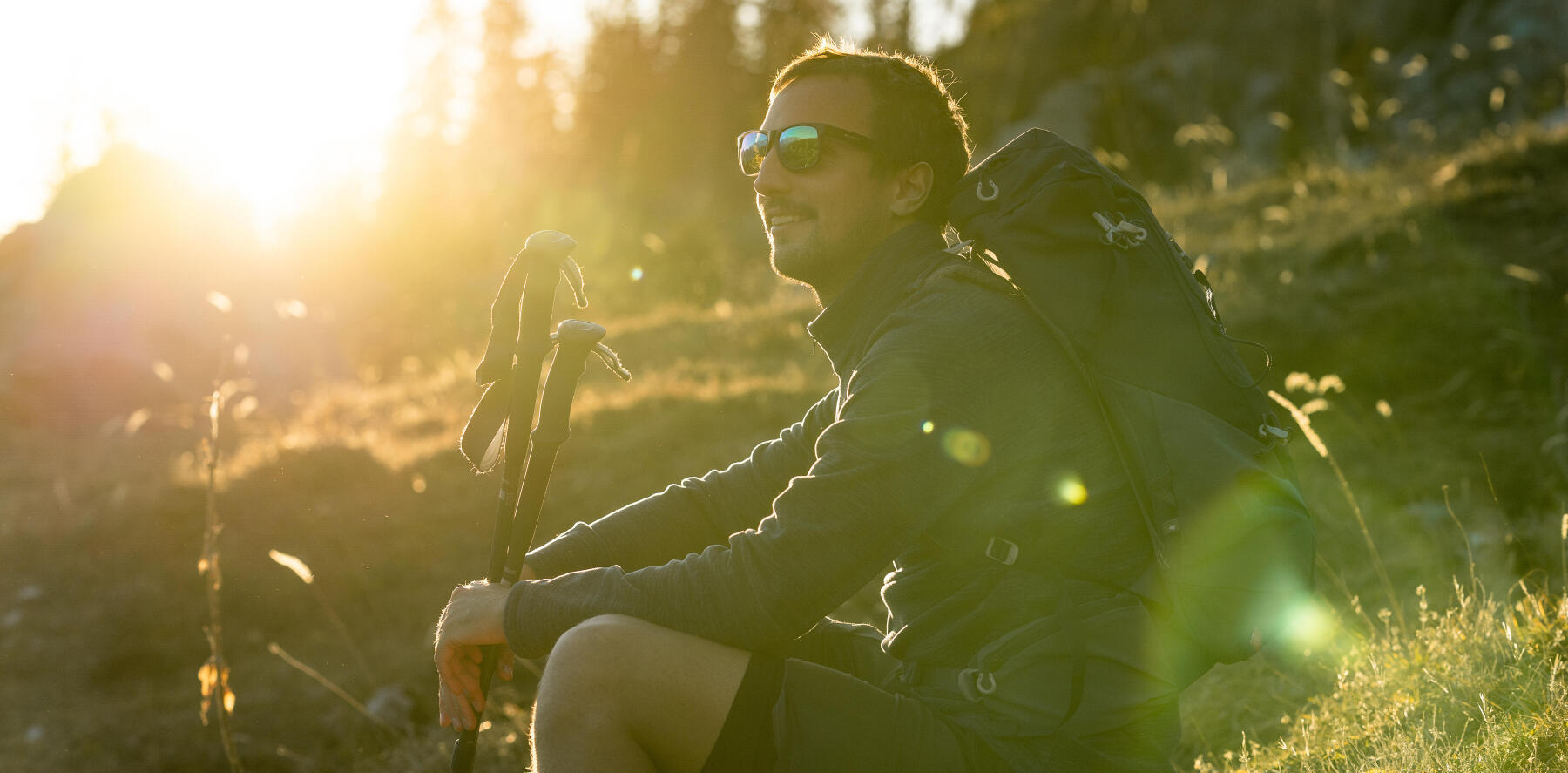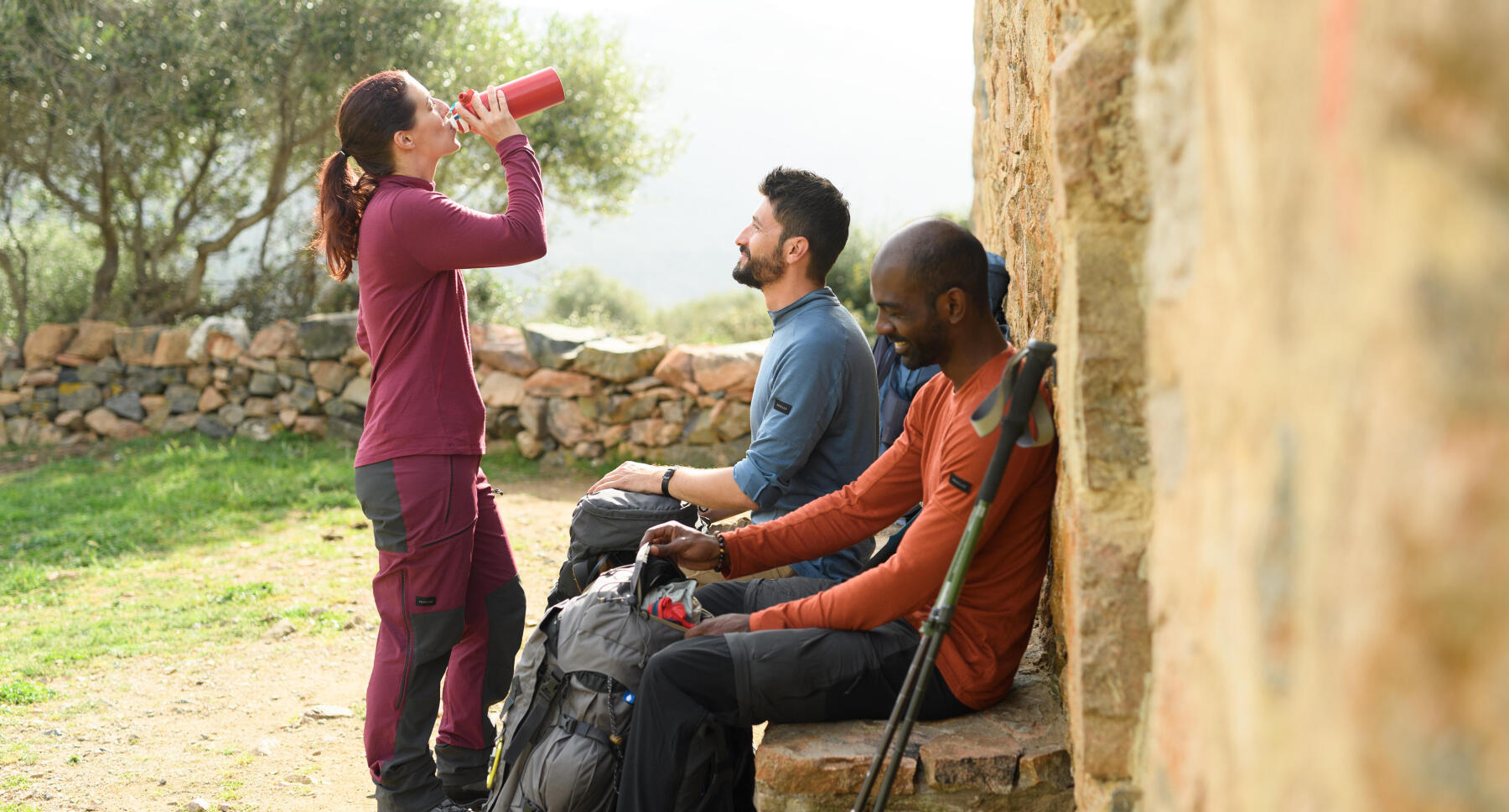Check the weather forecast
Before heading out, it is always a good idea to check the weather forecast. In the event of a heat wave and high humidex reading, we highly recommend you save your hike for another day.

Here are a few tips to help keep you hiking safely when the sun is out in full force.
Lots of people enjoy hiking during the summer. The weather is warmer and nature is in full bloom. Sunny skies and longer days serve as motivation for many of us to head out on the trails.
That being said, the intense summer heat can quickly turn your hikes into “yikes!” if you don’t plan ahead. Of course, everyone has their own definition of “hot weather”, and their own tolerance levels for heat.
Before heading out, it is always a good idea to check the weather forecast. In the event of a heat wave and high humidex reading, we highly recommend you save your hike for another day.
People who hike high altitude trails are more exposed to the sun’s harsh ultraviolet rays (UVA and UVB) than those who tread closer to sea level. Solar radiation increases by about 4% for every 300 m of elevation. Be sure to choose a trail with lots of trees, and walk in the shade as much as possible. If you can, plan your hike near a river, lake, or any body of water. That way, you can wet your clothes, your hat, or a microfibre towel to cool down.
To protect yourself from UV rays, it’s essential to wear sunscreen, but don’t forget to put on sunglasses and apply lip balm too.

Wake up at dawn – or as early as possible – so you can end your hike before the hottest hours of the day: between noon and 3:30 pm. Remember that UV rays are strongest and most harmful around noon. If you don’t finish your hike before the early afternoon, take a break in the shade and wait until a little later before you start heading back.
A wide brimmed hat provides maximum protection for your face and neck. Be careful, direct exposure to the sun, especially on your head and shoulders, can cause sunstroke. A flushed and hot face, a headache, and nausea are some of the symptoms that develop hours after your exposure. If you develop any of these symptoms: stop hiking, find some shade and take a moment to hydrate.
Socks made from a blend of cotton and synthetic fibres or wool are good for short hikes and easy trails.
Wear light and breathable socks made from Merino wool or synthetic fabric if you expect to go on a much longer walk, or tackle more technical trails.
Check out this article: How to select the right hiking shoes for tips on how to find the best hiking shoes or boots for your excursion.

Même si vous n’avez pas soif, il est essentiel de boire régulièrement de l’eau pendant une randonnée. Assurez-vous de connaître la longueur du sentier avant de partir afin d’apporter une quantité d’eau en conséquence. Vous pouvez trimballer votre liquide dans des bouteilles ou dans le réservoir d’un système d'hydratation doté d’un tube qui vous permettra de vous hydrater fréquemment durant le parcours.
Even if you’re not feeling very thirsty, it’s essential to hydrate regularly during a hike. Consider the length of the trail before you set out–this way you’ll be sure to bring enough water for the journey. You can carry water in bottles, or use a hydration pack with drink tubes to stay hydrated as you move.
Sometimes, water isn’t enough for you to be fully hydrated. The hotter it is, the more you sweat. Perspiration contains mineral salts (sodium, potassium, calcium, and magnesium) known as electrolytes. Sodium helps with water retention, potassium regulates water levels in your body, calcium helps the muscular and nervous systems function, and magnesium maintains optimal fluid levels within the cells themselves, keeping your body balanced and moving. Low electrolyte levels can cause dehydration and muscle cramping. For proper hydration and optimal electrolyte levels, use electrolyte tablets that dissolve in water, and bring along some salted snacks like granola bars or nuts.

Wear loose fitting, light and technical clothing that will wick away moisture and offer good ventilation. Don’t forget that dark colours absorb the sun’s heat, whereas lighter shades will reflect it.
In general, cotton clothing is not recommended for outdoor activities in cooler weather because the fibres absorb moisture and are slow to dry. However, in hot weather, the moisture that can evaporate from a cotton T-shirt may feel fresh and cool to some people. You be the judge.
Clothing with an ultraviolet protection factor (UPF) offers greater protection against the sun’s harmful rays. As a general rule, the higher the number (15, 30, 50, and 50+), the better the protection. At Decathlon, all of our UV-resistant fabrics are UPF 50+. They represent the highest standards in the world (European and Australian Norms: DIN. EN 13758-1 and AS/NZS 4399) and provide maximum sun protection for your skin.
Extra tip: Avoid wearing metal jewelry in the sun, it can quickly become uncomfortably hot on the skin.
It’s important to respect your own limits; since you might not actually realize how much energy it requires to be active in the heat. Take your time. It is not a race. If you start to feel chills, nausea, or a headache: stop immediately. If you don’t stop, you may get heat stroke if your body temperature climbs too high (40.5ºC) and you may suffer from the following symptoms: dizziness, flushed skin, muscle cramps and vomiting. In that case, do not continue your hike. Stop, rest, and hydrate. The best way to avoid physical problems is to know your limits and manage your food and hydration needs in advance.
Happy trails!